For more stories from the other conservation departments at the Fitzwilliam Museum, visit the Conservation and Collections Care blog!
Makiko Tsunoda was Icon intern in Manuscript and Rare Book Conservation, sponsored by the Sumitomo Foundation, until April 2013.
Welcome to the conservation students’ and interns’ blog! The primary aim of my internship is to conserve rare books and manuscripts held in the Founder’s Library of the Fitzwilliam Museum. This is taking up the majority of my time, and allows me to expand my skills and knowledge regarding condition assessment, planning, and book conservation treatments.

To highlight my work, I selected one recent conservation treatment I carried out, that of a late 17th-century printed book (13.2.G.1). The book has a ‘Cambridge panel’ style tight-back binding, sewn on 5 raised cord supports and laced into boards. Just in case you are wondering, an Oxford binding style does exist too!

The book was selected for my project because it has several characteristic types of damage for library bindings, therefore requiring a wide range of conservation treatments. A condition report was first produced and possible treatment options were discussed with my supervisor. I found this process very useful in terms of understanding the causes of damage (specifically the relationship between the materials and the structure), and it allowed me to explore various treatment options.
Treatment was started following some planning. After some surface cleaning and consolidation of the brittle leather cover surface, laminating millboard corners were consolidated with Japanese tissue paper and wheat starch paste.

As the cover boards were detaching from the spine, they needed to be secured. I first split the book leather cover and millboards using a bamboo spatula, and then inserted and pasted cotton tabs between the pastedowns and boards, thus providing a stronger structure. Following this, Japanese paper was pasted onto the cotton tabs and toned where visible.
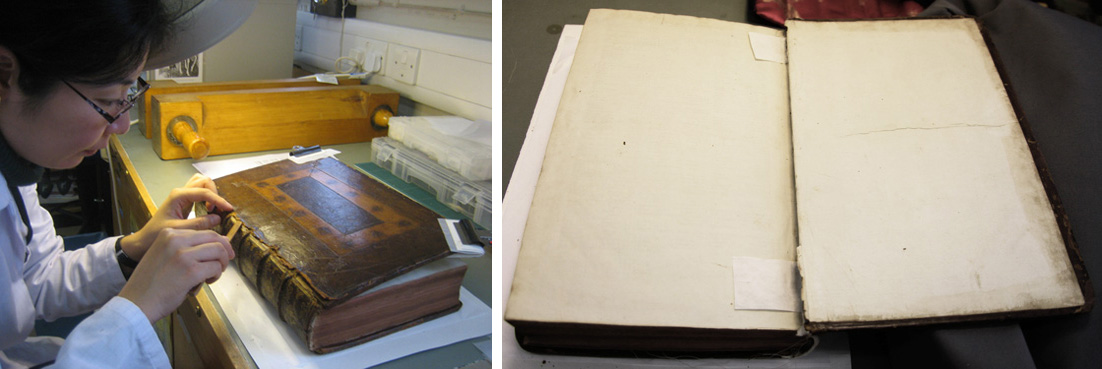

The next step was to built a missing headcap using Japanese paper and wheat starch paste; it is essential to build the joint carefully so that it does not give any stress to the spine when opening the book. A missing headcap is a very common type of damage to rare books, as readers almost always pull books out using the headcaps. The proper way to pull books out is to handle them from the centre of the spine!
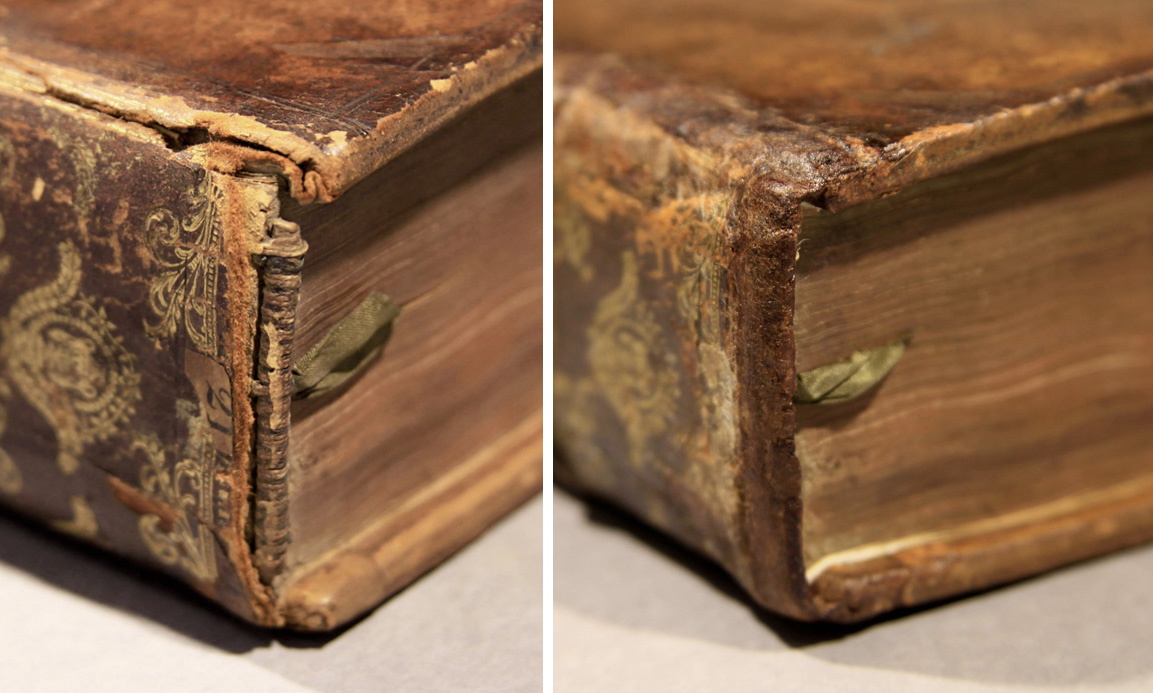
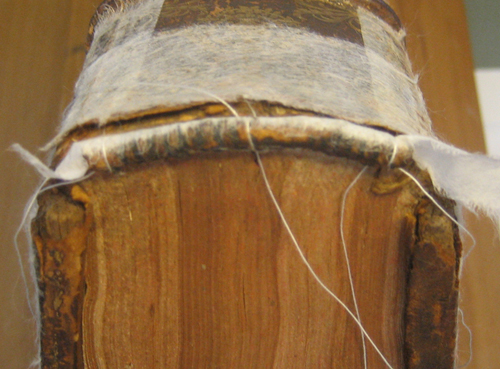
The following step was to reattach the endband using Japanese paper and a cotton thread. I first observed and sketched the endband, helping me to understand its structure. This is a very simple but effective method. I then reattached the endband with three tie-downs, similar to the original structure.
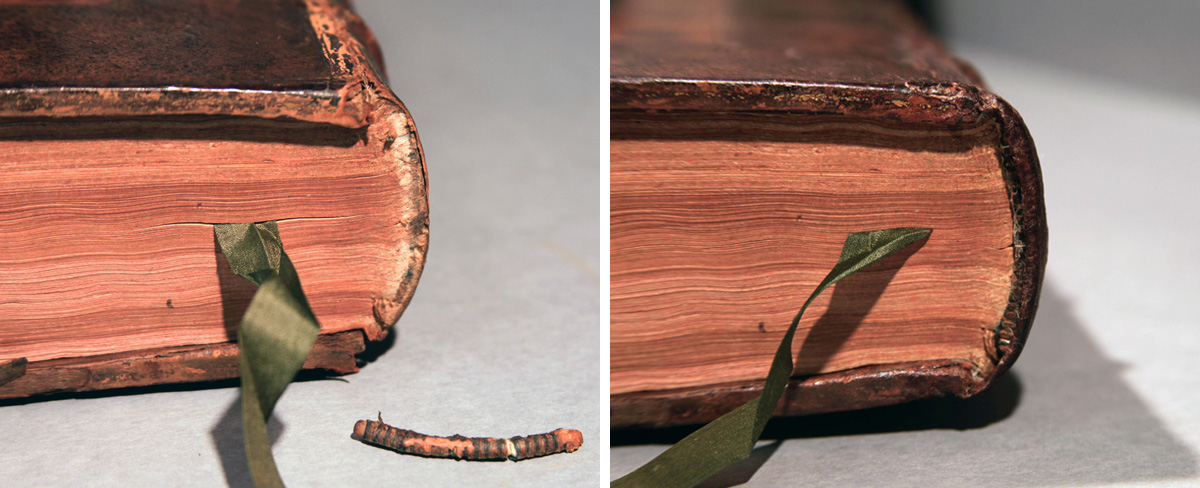
The inner joints were then re-enforced with 2-3 layers of Japanese paper, and V-shaped joint guards were created using heavyweight Japanese paper and wheat starch paste. The V-shaped joint guards act as cushions to protect the fragile inner joints.

For the final step, I removed the facing tissues carefully, toned the Japanese paper where visible, and polished the leather cover surface. Now the book is conserved and safe to handle and read, the primary aim of the treatment!
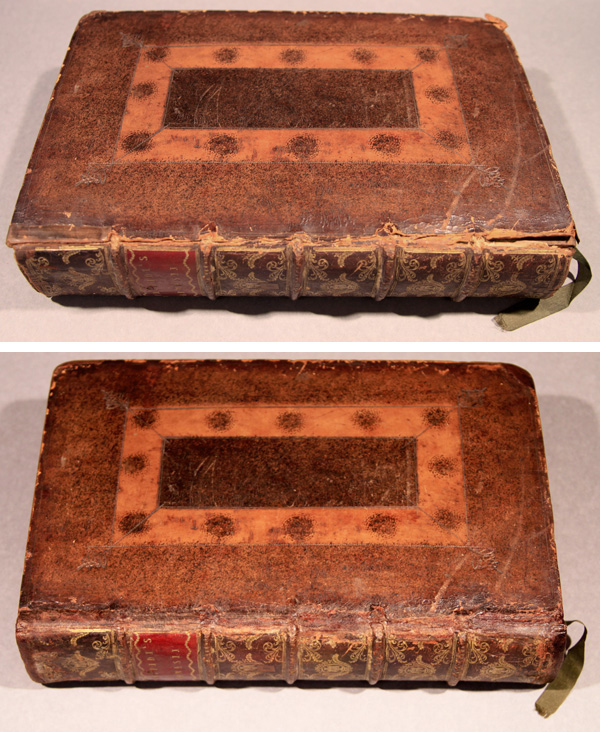
Throughout this project, I was constantly reminded that a key aspect of book conservation is to understand the book structure. Damage is often rooted in the book structure, while good functionality is essential to fulfill the book’s role, protecting and transmitting human knowledge.
– Makiko

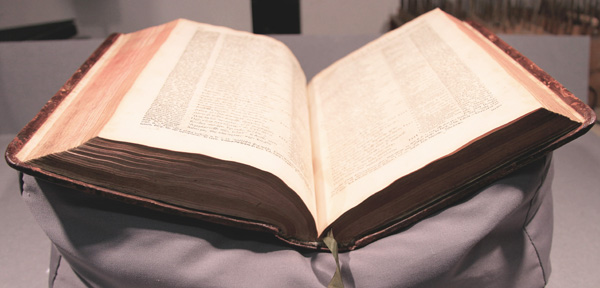
Brilliant step by step example of repairing a distressed priceless volume …well done!
I was a bookbinder and found it most interesting. Thank you.
Very interesting example with great illustrations. I would like to see the condition report, too, as I am working on understanding preventive care at the moment.
very insightful, thank you.